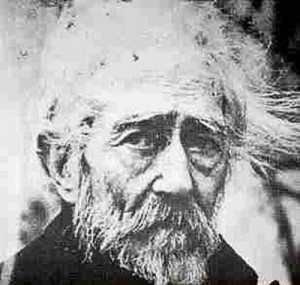John Perry, a professor in the philosophy department at Stanford, recently gave a lecture at Amherst College titled ” ”˜Borges and I’ and ”˜I’ ”. (via Perlocutionary).
Since the lecture is by a philosopher and it’s about Borges, you can be certain that it talks about the philosophy of language and “self”. If you’re not into epistemological discussions then you might think that it will be rather tedious listening, but it’s aimed towards an undergraduate audience and Perry wades into the topic rather slowly. Much of the talk is on the simple ways that we use language everyday, such as how we introduce ourselves at a party or how we ask for salt at the dinner table, the usage that we give to proper names and pronouns.
If you’ve not read “Borges and I” then it’s worth a reading or even a re-reading. It’s a short piece, less than 1 page. While “Borges and I” is usually included in The Collected Fictions, it’s really more of an essay, a contemplation about the public persona of Borges the writer.
The Borges work and Perry’s lecture made me think of the nature of celebrity and the impressions, beliefs we form about people in the news. But even on a more ordinary level, what we think we know about others, the people we know, even our friends, our family, our lovers. We probably know less about their motivations than we think we know, yet we often, usually, perhaps always, make assumptions about their behavior based on what we think we know about them.
In his lecture, John Perry said,
I think selves are basically just people, seen as playing the role of being the same person as the subject of some verb, the agent of some activity, the thinker of some thought, the possessor of some emotion, and so forth. My neighbor is just a person, thought of as playing the role of one who lives next to, relative to me. My father is just the person who plays the role of being the male parent of, relative to me. “Neighbor” and “father” are role-words, and so is “self.” On this conception of selves, there is only one self per person, the person himself or herself.
Still, we often use phrases like “the true self” or “the authentic self.”
Perry goes on to describe how “cognitive structures, though no longer my true beliefs, or even really beliefs at all, live a shadowy half-life in the darker regions” of our psyches.
The last line of “Borges and I” famously ends with the sentence, “I do not know which of us has written this page.”
It hadn’t occurred to me before but by the time that Borges composed that line he had already gone blind. So, in the physical sense of writing, he actually did not write that line. It was written by someone else, the person listening to him.


 María Kodama is a well-known figure among porteños but those not familiar with the life of Jorge Luis Borges, who died in 1986 at the age of 86, may be surprised to know that his widow is still very much alive.
María Kodama is a well-known figure among porteños but those not familiar with the life of Jorge Luis Borges, who died in 1986 at the age of 86, may be surprised to know that his widow is still very much alive.